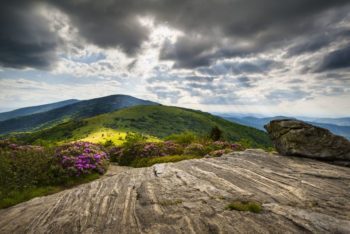
Appropriately enough, ISC President Kiran Singh Sirah learned about meditation through storytelling. He recalls an old folk story told by Mr. George, his beloved teacher in childhood, about a noisy kingdom that fell silent on one fateful day. “It was the tale of a prince whose father asked him what he’d like for his 21st birthday,” Sirah says.
The prince said he’d like everyone from every corner of the kingdom to join him in making the biggest noise the kingdom had ever heard. When the day came, people traveled to the celebration from near and far. They brought their noisy carts, their noisy friends, and their noisy selves. Everyone was thrilled at the prospect of coming together to make such a noise for the prince’s birthday.
As the hand on the big palace tower was about to turn to twelve, the prince, and his father, the king, looked out from their balcony on a sea of people that stretched as far as the eye could see. But when a gong was struck (that was the signal to start making noise), there was complete silence. No one wanted to miss out on hearing the loudest noise in history, and how could you hear it if you yourself were making noise?
In that moment, for the first time in the history of this naturally noisy kingdom, people heard the soft sounds of birds singing, streams flowing, and even the whistle of the wind gently blowing leaves on the trees. It was delightful. There was a fierce beauty in it.
“When I heard Mr. George’s story, I started to become aware of the great things that can happen when we are silent.”
Sirah would think about that story again much later in life, when he learned the actual process of meditation from monks during a weeklong Buddhist retreat.
Meditation is having a bit of a moment right now, not just in science—more on that in a bit—or with ISC’s president, but in pop culture and across the arts. One of meditation’s best known spokespeople has become the filmmaker David Lynch—the director of Twin Peaks—who founded his Foundation for Consciousness-Based Education and World Peace in 2005.
Lynch’s foundation is focused on peace-building, promoting excellence in at-risk populations, and healing traumatized veterans and victims of violence. But in terms of personal practice, Lynch, who thinks of himself as a storyteller, has meditated twice a day for more than 40 years. He’s quite interested in using it as a tool to unlock creativity—a subject he wrote about in a book called Catching the Big Fish:
Ideas are like fish.
If you want to catch little fish, you can stay in the shallow water. But if you want to catch the big fish, you’ve got to go deeper.
I look for a certain kind of fish that is important to me, one that can translate to cinema. But there are all kinds of fish swimming down there. There are fish for business, fish for sports. There are fish for everything.
The beautiful thing is that when you catch one fish that you love, even if it’s a little fish—a fragment of an idea—that fish will draw in other fish, and they’ll hook onto it. Then you’re on your way. Soon there are more and more and more fragments, and the whole thing emerges.
While meditation has long been recognized by artists as a tool that can enhance creativity, the body of evidence-based science related to its health benefits has grown exponentially in recent years. Researchers at some of the country’s most prestigious institutions of higher learning have found that meditation is an effective treatment for post-traumatic stress disorder, clinical depression, obesity, and cardiovascular disease, among many other ailments.
But perhaps meditation’s greatest benefit is in how it teaches people to cope with the stress and anxiety of our workaday world—the clutter and clamor of Mr. George’s “noisy kingdom,” (think about all that chatter in your Facebook feed).
That’s what Dan Harris, the Nightline anchor on ABC, found when he stumbled upon the benefits of meditation by accident, an experience he wrote about in 10% Happier, a memoir.
A natural skeptic—he’s a journalist, after all—Harris was put off by the aura of “woo-woo” spirituality surrounding the practice of meditation. Against his expectations, he found meditation to be a useful tool in cultivating personal and professional success. It helped him calm his busy mind, manage his emotions in volatile situations, and live in the moment instead of dwelling on the past or worrying about the future.
As for the rest of us, there are many different ways to meditate. Some are attached to religious traditions; others aren’t. Here’s an easy technique you can try that’s recommended by our own resident expert, Kiran Singh Sirah:
“The other day I was camping up Roan Mountain, and I did a mountain meditation,” he tells us. “That’s when you imagine the most stunning, incredible mountain you have ever seen. It’s easy here in East Tennessee because, like Scotland [where Sirah used to live], there are many beautiful mountains.
“Start by imagining the strength, weight, and solidity of your mountain. Then the next step is to become the mountain—to imagine yourself in its place. Picture the world changing all around you. A hot day turns into a starry night, and then back to day again. Summer, Fall, Winter, Spring, the mountain stands through it all, touched but also unchanged.
“Our lives are similar in that many things change from minute to minute, or day to day. We’re sometimes sad, sometimes happy. But, like the mountain, we remain ourselves, still and powerful and strong.”
——
Stories in Motion is a regular feature in which ISC examines the fresh ways we see the power of storytelling at work in the world. Like this story? Share it and sign-up for our newsletter to have content delivered straight to your inbox.
ISC is building a better world through the power of storytelling.

